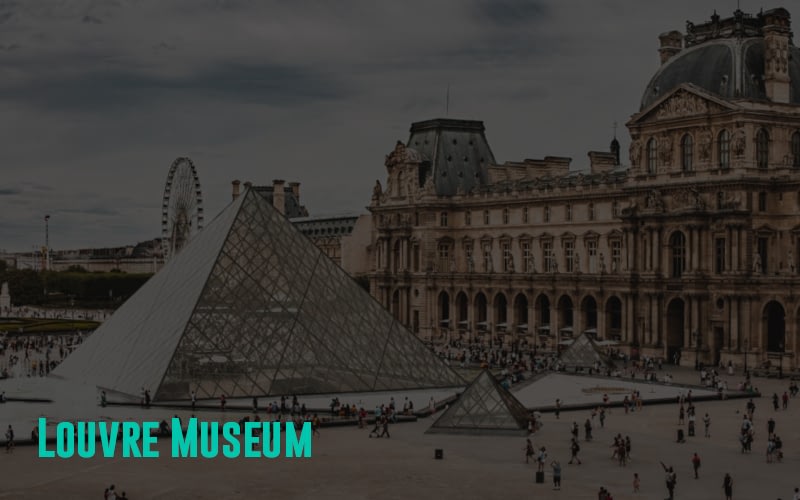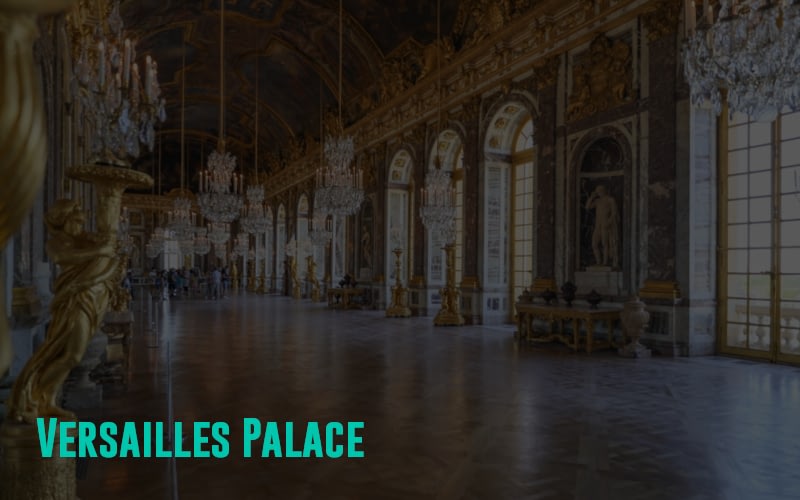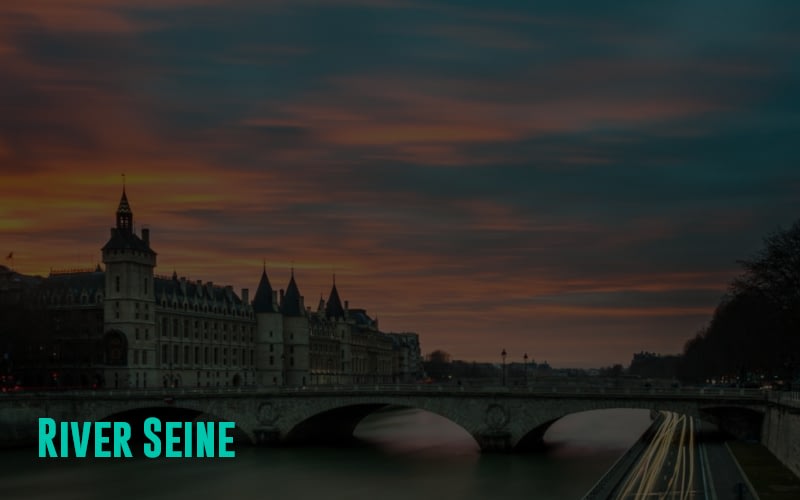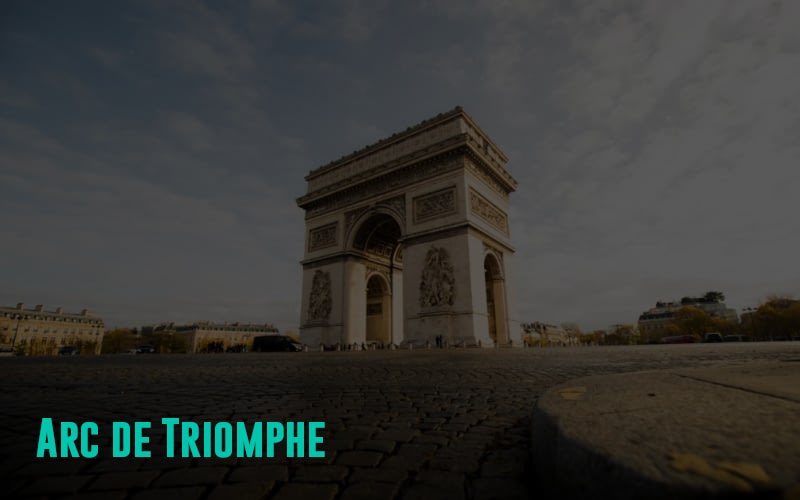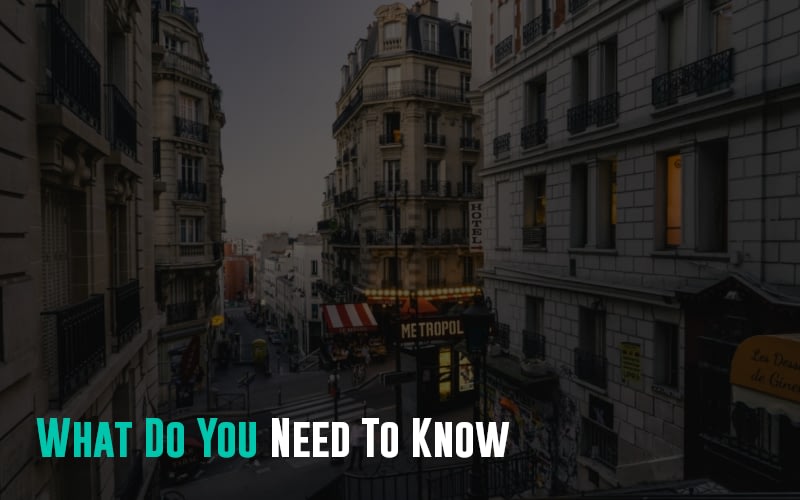Paris is a city that nearly everyone across the world has heard of. The capital of the European country of France, Paris is renowned for being a center of fashion, food, and culture. Landmarks like the Eiffel Tower are present here. Paris is a cultural center that is home to important historical buildings, as far as French history is concerned. The Palace of Versailles, the Cathedral of Notre Dame, and many other important buildings still stand in Paris today. Renovation work has been done on some of these, but the essence has always been to maintain the building for what it was.
Known as one of the most romantic destinations anywhere in the world, Paris is a city where you can get lost for hours and never get bored. Around every corner, you’ll find something new, maybe a Café, maybe a shop, or maybe even a relic from the city’s past.
A Brief History Of Paris
Paris was founded by the Parisii, near around 259 BC. The Parisii were a Celtic tribe that chose to settle on the banks of the Seine River. Later, in 52 BC, the Romans conquered what was until then a small fishermen village. They founded Lutetia in its place.
It wasn’t till the 4th century that the city came to be known as Paris. In 508, Clovis I, king of the Frank’s, made Paris his empire’s capital. Around the 11th century, Paris lay on a strategic route that was used by both traders and pilgrims. Paris, which was rich in silver, started to grow.
Around the start of the 12th century, uprisings from students as well as professors led to the foundation of the first university in France. In the 14th century, at least three insurrections happened in Paris. Around 1328, thousands of Parisians were affected by the bubonic plague and died. Paris would continue to grow over the next few centuries. Around 1528, King Francis I shifted the royal residence from the Loire Valley to Paris.
In 1648, the Fronde parlementaire began. This referred to civil wars that rocked France between the years 1648 and 1662. In just another fifteen years, King Louis XVI would move the royal residence to Versailles. Due to the Fronde, poverty became common in Paris. The Enlightenment came to Paris at the same time. The ideas of thinkers like Voltaire and Rousseau had a direct impact on the decline of the monarchy. On the 14th of July in 1789, Parisians stormed the Bastille. On the 3rd of September 1791, the first Constitution that was written down was both drafted and approved by the King of France, King Louis XVI.
This was followed by Parisians storming the Tuileries Palace in 1792, following which the constitutional rights of the King were suspended. On the 17th of August 1795, a brand new Constitution was created and approved that provided a Directory with executive power.
Napoleon Bonaparte came to the scene on the 9th of November, 1799, when he led a coup d’etat that overthrew the Directory. It was then replaced by a Consul and Napoleon was named the First Consul. The Napoleonic Wars, which continued through the next fifteen years, would finally end on the 29th of November in 1815 when Napoleon lost at the Battle of Waterloo. That same year, the new Treaty of Paris was signed.
After a period of political instability, Napoleon’s nephew organized a coup d’etat in 1855 and declared himself to be Emperor Napoleon III.
Under Napoleon III, Paris witnessed urban development like never before. In 1871, Paris was captured by troops from Prussia. In just a few years, The Third Republic will be proclaimed. In 1889, one of the most famous symbols of Paris, the Eiffel Tower, was constructed.
During the two World Wars, Paris saw large neighborhoods damaged by enemy fire. These were, over the next decades, reconstructed. During the First World War, Parisians were able to keep their city safe from enemy lines. But during World War II, the Nazis succeeded in occupying Paris. The city was then freed by the Parisians on the 25th of August 1944.
Five Fun Facts About Paris
- It takes around 20,000 bulbs to illuminate the Eiffel Tower. The Eiffel Tower is considered an art installation in France. Each night, as the darkness starts to descend, thousands of light bulbs light up the Eiffel Tower.
- Underneath Paris, there runs a network of catacombs. In the late 1700s, what used to be a stone quarry was converted into a cemetery. Only a small part of the catacombs is open to the public.
- Paris is also known as the ‘City of Lights’. The term came into prominence during the Enlightenment Period in France. This was during Louis XIV’s reign, right before the French Revolution.
- There are two islands on the River Seine that are considered part of Paris. These are called the íle de la Cité and the île Saint-Louis.
- The Eau De Paris announced in 2019 that they aimed to curb pollution caused by single-use plastics. To this end, they constructed water fountains around the city that provided fresh sparkling water for free. This in turn encouraged the locals to use the fountains instead of purchasing single-use plastic water bottles.
Top Destinations In Paris
Are you a Paris travel enthusiast? You could also be working on your Paris guide to travel. If you want to visit Paris, then you should know what the top destinations to visit there are. Learn what the top things to do in Paris are. These are the top five places that you must visit in Paris:
Eiffel Tower
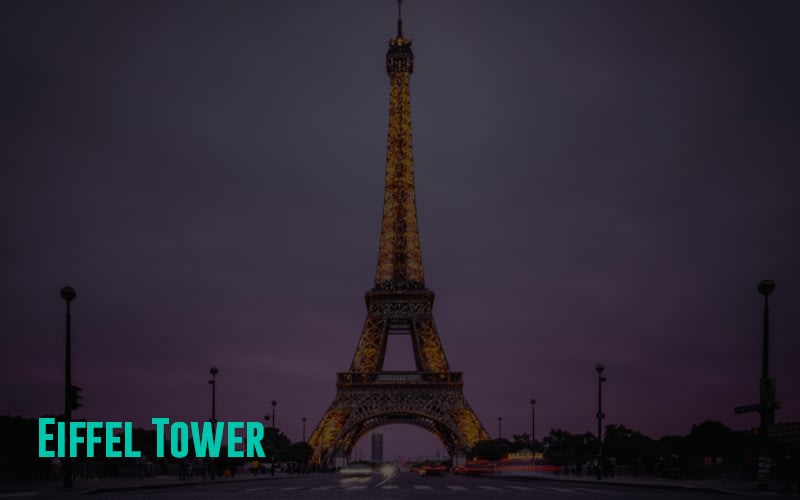
A prominent part of the landscape of Paris, images of the Eiffel Tower immediately bring to mind thoughts of the city of Paris. On the Eiffel Tower, you can enjoy beautiful views of the Parisian landscape from three separate levels. There are visitors to Paris who have on their travel bucket list, to view Paris from the highest level of the Eiffel Tower. There’s a special kind of thrill that involves going up the observation deck of the Eiffel Tower to see what Paris looks like from atop it. You can even book a professional photoshoot in front of the monument, although many people simply use their phones.
If you want to view the Eiffel Tower from the River Seine, then you’ll find cruises on the Seine that show you just that. There can be huge lines to get into the Eiffel Tower. During the peak summer months, it can take you four hours to get your tickets. If you want to avoid this, simply book your tickets in advance.
Louvre Museum
Considered the most visited museum in the world, if you’re visiting Paris, then don’t miss out on visiting the Louvre Museum. Over 10 million people visit this museum every year. A lot of the popularity of this museum stems from three famous pieces of artwork. The first of these is the Mona Lisa by Leonardo da Vinci. The other two are the statues ‘Venus de Milo’ and ‘Winged Victory of Samothrace.’ There’s a lot more that you can see in the Louvre as well. There are Egyptian mummies, European paintings from the Middle Ages, and rooms full of tapestries, ornamental furniture, and objects.
If you go to the basement level, then you’ll be able to enjoy viewing the excavations of the original fortress. It’s from the 12th century and stood where the museum stands today. There are usually large crowds at the Louvre, so expect to spend a long time here when you do visit. You could easily spend the whole day moving from room to room in the Louvre. If you’re not fond of crowds then you could opt for guided tours instead.
Versailles Palace
There are over seven hundred rooms in the majestic structure that is the Versailles Palace. Historical figures like King Louis XIV and Marie Antoinette once walked through these same halls. Of particular note is the Hall of Mirrors, known for having a glittering appearance. Each of the rooms in the palace is lavishly decorated. If you’re planning a trip to Paris, then you must visit the Versailles Palace. It’s easily possible for you to spend the whole day wandering around the palace. Aside from the palace itself, you can also enjoy viewing the palace gardens, which come with fountains, statues, trees, and walking paths.
Huge numbers of people flock to view the Versailles Palace every day. The security check lines are slow, and it can take you anywhere between two to four hours to get in. This will happen through most months of the year. If you opt for a guided tour, then this process could be hastened. This is because there is a separate security line for people taking guided tours.
River Seine
The River Seine flows through Central Paris. The ile de la Cite, situated within the river, is considered the historic heart of the city. On this island, you’ll find parks, medieval structures, and 17th-century enclaves. There are plenty of ways to enjoy the Seine River. You can walk along its banks and look at the carefully constructed bridges on the river. You could walk along the Parc Rives de Seine, which is a promenade only for pedestrians, linking the Place de la Bastille to the Eiffel Tower. You could also get on a boat and tour the Seine in a unique way. Through your tour, you’ll be shown several historic buildings, as well as bridges.
If you’re visiting Paris during summer, then you’ll notice that the Les Berges, on the Left Bank of the Seine, becomes especially lively during this time.
Arc de Triomphe
To your Paris travel guide, add the Arc de Triomphe, one of the most recognizable attractions in Paris. Your Paris trip planner should note that on the first Sunday of each month, the Champs Elysees becomes a pedestrian-only zone. This is the best time to visit this attraction. Once you get your ticket and reach the observation deck, you can enjoy a 360-degree view of Paris. Towards the base of the monument, you’ll find the Tomb of the Unknown Soldier. This seeks to memorialize unnamed French soldiers who died in the two World Wars. At 6:30 PM every evening, the statue is re-lit. On July 14th, November 11th, and December 31st, there are parades that start at the Arc.
What Do You Need To Know Before Traveling To Paris?
As France is part of the European Union, you will need a Schengen visa to enter the country. Your Paris trip planner should include everything you should do before you reach the city. Paris is the fashion center of the world, so don’t be surprised if you find yourself splurging on new clothes. Pack only the essentials of your wardrobe so you can add to it later in Paris.
The best time to visit Paris is between February and April. This time is particularly great for outdoor activities, like going for a walk or going on a picnic. The peak season for tourists is between June and August. This is summertime in Paris, when the city gets more than eight hours of sunlight every day.
What Is The Best Time To Visit Paris?
There’s no bad time to visit Paris. With that said, when you go can affect your experience of the city. The months from January through to March are the coldest. If you want to experience the city like a local, then this is the best time to visit. As the spring season nears, more and more tourists start to visit Paris.
The best time to visit Paris is between September and October. This is when a cool breeze flows through the air, not too hot and not too cold. This is also when the Paris Fashion Week is held, so you might see a few celebrities around town.
Paris is the busiest between June and August, and then again during December. These are times when schools are usually off, giving families the opportunity to travel together. The low season, on the other hand, is between January and April.
What To Expect From The Culture Of Paris?
Paris is a warm and welcoming destination where travelers are greeted well and cared for by the locals. You will find people who prefer to keep to themselves, but Parisians are by and large friendly. In France, you’re not expected or obligated to leave a tip behind. However, if you enjoyed your meal or the service, you can leave up to 10% of your bill as a tip.
The official language of Paris is French, and English isn’t really widely spoken in this city. However, people working in places frequented by tourists – such as hotels and restaurants – are more likely to understand English. Paris is considered a safe city both for solo travelers as well as group travel.
In Paris, the best way to get around is either on foot or by the metro. You can take buses to get around as well, and if you really feel like splurging, then hire a cab.
Is It Safe To Travel In Paris?
Paris is safe to travel to, for groups as well as for solo travelers and women. It should be noted that while violent crime is low in Paris, it isn’t non-existent. Petty theft and pickpocketing are more common, so make sure to secure all your things when you go out. If you’re carrying valuables with you, consider leaving them in a safe environment.
It should also be noted that Paris has been affected by terrorist attacks in recent years, including in 2015. The likelihood of there being a terrorist attack when you visit Paris is relatively low. However, keep in mind that it has happened before. For tourists, the major crimes that might affect them are theft and burglary. In 2023, due to increased police presence in popular areas, Paris will be even safer for tourists. There are scams in Paris that tourists should be aware of as well. The first is if someone comes up to you with a gold ring. Then there are scammers who grab your hands and try to make a bracelet around your wrist and then charge you for it.
Be vigilant and careful during your stay to avoid getting scammed or having your things stolen. If you prepare ahead of time, you should be able to steer clear of both of these.
How Do You Get Around In Paris?
The public transportation system in Paris is extensive. The fastest way to get around is via Metro. There are fourteen interconnected lines that cover more than 133 miles. The Paris Regional RER train is another great way to travel. It works both as a train as well as a subway. It connects the city center to the various airports, as well as to Disneyland.
A popular way to get around is by using the city bus. Buses operate on different schedules and can take you to most places in the city. The Montmartre Funicular is also a great way traveling experience you should keep in your itinerary. It’s an automatic railway that comments the foot of the Butte-Montmartre with the summit. It saves you from climbing 197 steps.
A unique way to travel in Paris would be by using the tramway. These had disappeared in Paris, but since the 1990s, they have been making a comeback. There are also over twenty thousand taxis plying the streets throughout the day. You can book a taxi or hail one on the street.
Consider investing in a travel card, especially if you intend to use a lot of public transportation. You could go for the Paris Visite travel card. This allows you to travel an unlimited number of times on the metro, the RER, the tramway, buses, the Montmartre Funicukar, and the Montmartrobus. You could also get the Passe Navigo, which is commonly used by Parisians. It’s the cheapest way of getting around in the city.
Famous Local Dishes To Try In Paris
Paris is known for being home to some of the best restaurants anywhere in the world. But if you want to try Parisian favorites, what should you opt for? When in Paris, the first thing you should try is a freshly baked baguette. These can be spread with butter or jam or used in making a sandwich. The shape of the baguette is similar to Viennese bread, which was imported to Paris during the 19th century.
You can even try your baguette with some of another Paris delicacy – local cheeses of all kinds. From bries from Provins and Meaux to special cheeses like the Coulommiers, savor all kinds of locally sourced cheeses next time you go to Paris. The Opera is a cake that’s very well known in Paris as well. There’s a story behind how this cake got its name. In 1955, a pastry chef in Paris prepared a cake by making neat layers of coffee ganache, coffee cream, and almond sponge. On the top was a chocolate topping that looked decadent. His wife, when she saw this creation, said it reminded her of the stage at the Paris Opera House. Since then, this cake has been known as the Opera.
Try croissants as well and also the pain au Chocolat. The croque monsieur is a sandwich of boiled ham, bechamel sauce, and melted cheese. It’s another Parisian delicacy. Steak and chips is another popular option that’s available at most bistros and restaurants in the city. If you want to try something comforting, then dig into a hearty bowl of onion soup. Aside from these, Parisian honey and macrons are two sweet delights that you shouldn’t miss out on.
The summer months are great for sporting events. The Paris Marathon is held in April, and the French Open lasts well into June. The Tour de France can be seen in Paris around July. In June, you can enjoy the Fete de la Musique festival. July 14th is when Bastille Day is celebrated, and fireworks and military parades can be seen. Around December, the Champs-Elysees lights up with numerous Christmas lights. On January 6th, Parisians celebrate the Feast of the Epiphany. Buy yourself a king cake to celebrate the occasion if you’re in Paris during the time.
What Should Be Your Budget For Your Paris Trip?
If you’re planning a trip to Paris, then you should create your travel budget ahead of time. Your Paris guide should note what your basic expenses will be and how much money you should carry with you. If you’re planning on visiting Paris for a week, then on the lower end, you could need to spend $1500 per head for the trip. On the higher end, you could be spending as much as $3000 per head as well. Where you stay, how you travel, and what you buy will determine what your actual budget should be.
Conclusion
Travel-Wise takes you through everything you need to know to create the perfect Paris travel guide. With the help of our easy and convenient AI itinerary generator, you can plan your trip in no time! Find ways to budget and organize your trip with helpful tips from our travel community. You can also make use of our Country Guides to find more information on your destination and prepare yourself ahead of your travels. Remember to journal and share your experiences with our community and become part of an amazing community of travel enthusiasts!


